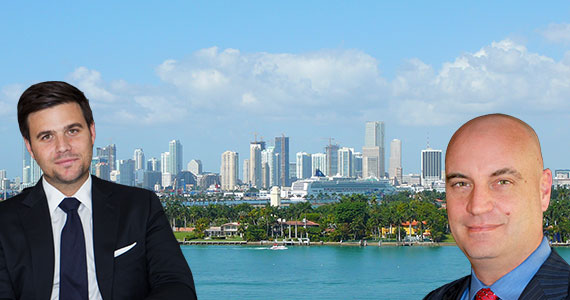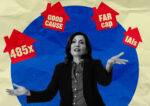Trending
Miami’s luxury home sellers could face price cuts up to 20 percent: Integra

“Market correction” is the phrase that has hung over the heads of many in Miami’s luxury real estate industry over the past year. The global economy, which has led to weakening demand amid rising prices and supply, has left those in the front lines wondering what’s next for the Magic City’s priciest addresses.
It was also the main point of discussion at a Tuesday morning talk hosted by analyst Anthony Graziano and ONE Sotheby’s International Realty President Daniel de la Vega, who met at Brickell City Centre’s sales gallery to share their second-quarter report on Miami’s luxury market.
Supply has begun to pile up. By Integra’s count, tallying prominent buildings in neighborhoods east of I-95, there were 14,804 condos for sale above $1 million by the end of this year’s second quarter. For single-family homes, 10,221 properties were actively listed in that price bracket.
Even so, luxury prices in most neighborhoods were still on the rise, while some saw values explode, according to the report. The largest jump in prices was for waterfront homes in Aventura, which had their average price per square foot rise year-over-year by nearly half to $503 per square foot.
Other neighborhoods showing resilience: Coconut Grove, where average prices for a waterfront home rose 22 percent to $1,064 per square foot, and Coral Gables, which saw its non-waterfront condos grow in value by 25 percent to $550 per square foot.
The takeaway from Miami’s disconnect between sales, supply and pricing, Graziano said, is that the market is facing a correction.
“The sellers have these lofty price expectations that can’t be met,” de la Vega said. That could lead to steep discounts from asking prices, by as much as 15 to 20 percent, both said.
“We’ll see over the next six to 12 months in the single-family market some retreats in pricing,” Graziano added.
De la Vega cautioned, however, that opportunists waiting for values to drop further than 30 percent would be out of luck. The global financial factors that depressed Miami’s luxury sector, like weak foreign currencies and stock market volatility, have begun to show signs of improvement, Graziano said.
He said the conclusion of this year’s U.S. presidential election — no matter who takes office — will also alleviate some hesitancy among high-net-worth individuals.
The uncertainty now is how a new president will affect issues like taxation and succession concerning real estate for foreign nationals.
As outlined by the most recent Knight Frank Wealth Report, which surveyed private bankers financial advisors, those issues topped the list of concerns for ultra-high-net-worth individuals at the beginning of this year.
Personal real estate is also not an investment they take lightly: the Knight Frank survey showed the ultra-rich typically stow 24 percent of their wealth in first or second homes.
However, many Latin American countries are still facing political and economic strife. Venezuela in particular has been hit harshly, with middle class families waiting in long lines for groceries amidst a food shortage.
“I suspect that it’s going to be lumpy for the remainder of 2016,” Graziano said.




